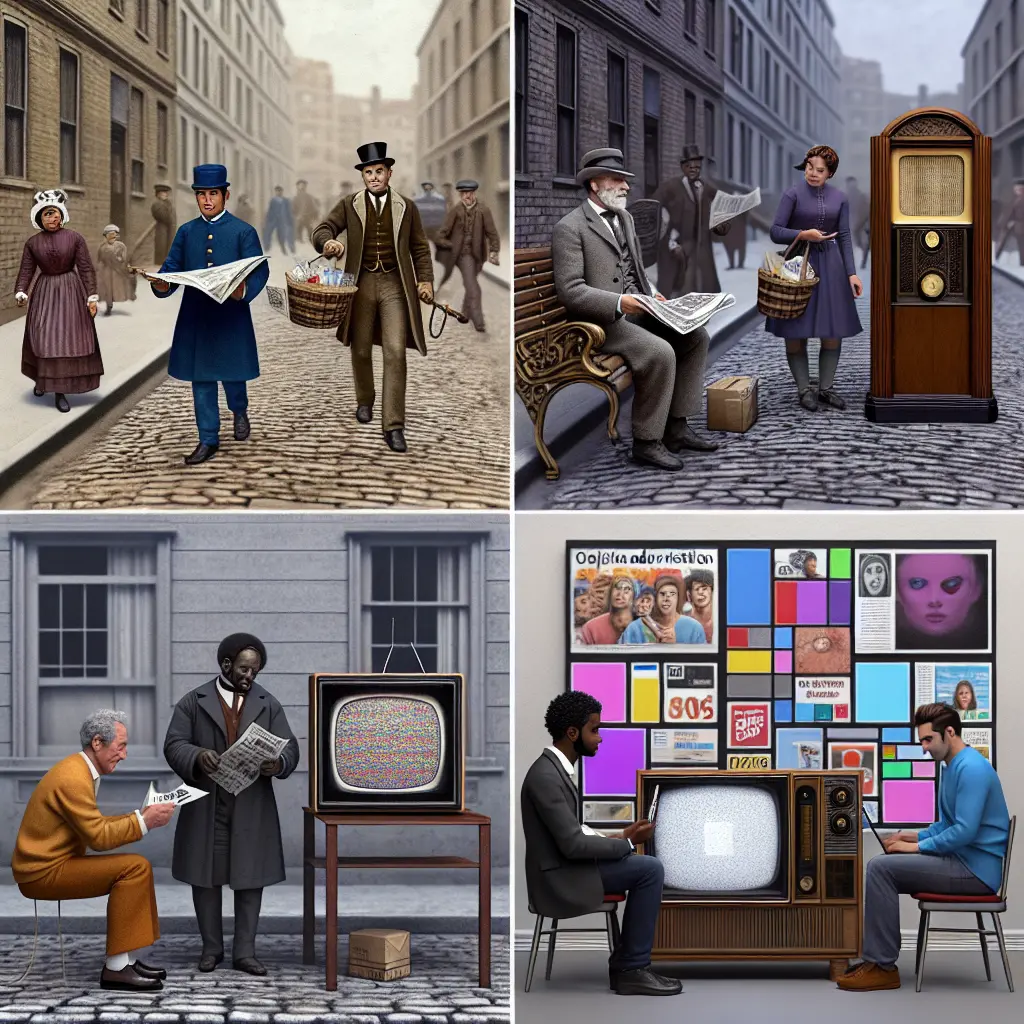
The digital landscape has transformed drastically over the past few decades, heralding significant changes in how brands connect with consumers. From the early days of banner ads to the sophisticated AI-driven platforms of today, the journey of digital advertising reflects not only technological advancement but also an evolving understanding of consumer behavior online.
The Dawn of Digital Advertising
Initially, online marketing was merely an extension of traditional strategies into the digital realm. However, the turn of the millennium brought with it Google Ads, setting a precedent for what would become a multi-billion dollar industry. The evolution of Google Ads mirrors the broader trends in digital advertising, transitioning from simple text-based ads to complex, data-driven campaigns that utilize sophisticated SEO strategies to reach targeted audiences.
The Rise of Social and Mobile Platforms
As social media platforms like Facebook emerged, they brought new opportunities for advertisers. Facebook advertising changes over the years have demonstrated a shift towards more personalized ads, leveraging user data to enhance engagement. Similarly, the surge in mobile usage prompted a boom in mobile advertising, reshaping how advertisers think about format and design.
Programmatic Advertising and AI Innovations
The adoption of programmatic advertising marked a significant shift towards efficiency and automation. Using algorithms and real-time data, advertisers could buy ad space more efficiently, maximizing ad performance analytics to tweak campaigns on the fly. More recently, AI in advertising has taken center stage. Innovations such as AI pendants, which interact with users on a personal level, showcase the potential of integrating artificial intelligence into everyday consumer experiences.
For instance, the recent controversy around the 'Friend' AI pendant, which texts users about their lives, highlights both the possibilities and ethical considerations of such technologies. Despite accusations of intellectual property theft and subsequent public relations setbacks with satirical diss tracks from aggrieved developers, products like these underscore the deepening interconnection of AI and consumer interaction in advertising (Source: TechCrunch).
Content Marketing and Video Dominance
The growth in content marketing has been another hallmark of online marketing evolution. Brands are no longer mere advertisers; they are publishers and storytellers. This shift is closely tied to the rise of video marketing. Platforms like YouTube have revolutionized how brands engage with audiences, offering a medium that combines entertainment with advertisement.
Influencer Marketing: A Game-Changer
Perhaps one of the most talked-about digital advertising trends in recent years is influencer marketing. As trust in traditional advertising wanes, consumers increasingly turn to figures they trust — influencers. This form of marketing has proven particularly effective in sectors like fashion and beauty, where personal recommendation holds significant sway over consumer decisions.
Retargeting Strategies and Personalized Advertising
As digital advertising has matured, so too have the strategies employed by marketers to keep their brands at the forefront of consumer minds. Retargeting strategies have become sophisticated, with cookies tracking user behavior online to allow for more effective, personalized ads that follow users across their digital journeys.
Current Landscape and Future Outlook
Today's digital ad spend is influenced heavily by these advancements. Companies allocate substantial budgets to digital channels, chasing the promise of high ROI through detailed data-driven marketing strategies. The integration of ad performance analytics ensures that every dollar spent is tracked, measured, and optimized.
However, recent news also reminds us of the challenges and responsibilities that come with advanced digital marketing technologies. For instance, a Virgin Atlantic Airways ad was banned in the UK due to misleading representations, prompting discussions about ethical advertising (Source: BBC News). Similarly, Apple's withdrawal of an ad after criticisms over cultural depiction highlights the global sensitivities brands must navigate in their campaigns (Source: The Guardian).
Impact of High-Profile Endorsements and Political Advertising
High-profile endorsements and politically charged ads continue to shape consumer perception and brand affiliations. A recent controversial move saw a Democratic group airing a commercial during President Biden's favorite show, urging him not to run for re-election — a bold example of how deeply politics can infiltrate advertising spaces (Source: Politico).
Moreover, endorsements from sports figures like Kevin Durant, who recently featured on a Nike billboard after a record-setting performance, underscore the potent combination of celebrity influence and major brand advertising (Source: ESPN).
Conclusion
In conclusion, the evolution of advertisement in the digital age is marked by an increasing sophistication and personalization of strategies—from SEO and content marketing growth to AI-driven interactions and data-centric targeting techniques. As we look to the future, it’s clear that understanding consumer behavior online will continue to be paramount. Brands will need to navigate ethical considerations carefully while leveraging digital marketing technologies to create meaningful and engaging consumer experiences.
Thank you for following this exploration into the ever-evolving world of digital advertising. Here’s to adapting and thriving in the dynamic seas of digital markets!
Yours digitally,
Felicia Morris